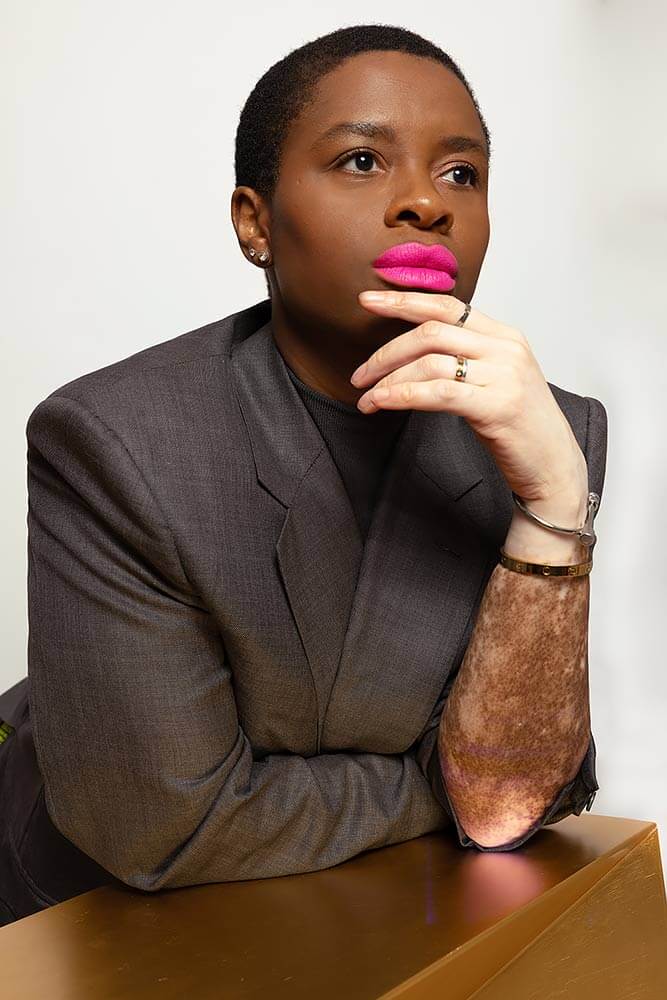Violeta Sofia is a photographer, artist and activist whose journey is as rich and
diverse as her artistic portfolio. Born in Cameroon and raised in Spain from a young
age, Violeta's multicultural upbringing deeply influences her work, which often
explores themes of identity, diversity, and human connection.
From a tender age, Violeta exhibited a passion for the arts, nurtured by her father, a
photography enthusiast. At just eight years old, she picked up her first camera,
embarking on a lifelong love affair with photography. Despite facing challenges and
discrimination during her school years. Violeta persevered, fuelled by her parents'
unwavering support for her creative talents.
After studying media studies in university, Violeta found herself drawn back to her
first love: photography. Her first photography jobs was freelancing in makeover and
model agencies, where she developed model portfolios and gained confidence in
posing and communicating with subjects. This experience laid the foundation and
the confidence to work with high-profile clients, including celebrities, where she
often had mere minutes to establish a connection and capture their essence.
As a fine artist and portrait photographer, Violeta has made significant strides in the
art world. Her work has been exhibited at prestigious institutions such as the
National Portrait Gallery and Christie's, showcasing her ability to blend creativity
with a powerful narrative. Additionally, she has graced the covers of renowned
publications like Elle Italia, Deadline Hollywood, and The Telegraph, cementing her
status as a prominent figure in the industry.
In addition to her artistic pursuits, Violeta is also a passionate activist, advocating for female inclusivity and representation in the arts. Through her photography, she
seeks to challenge stereotypes and highlight the diverse experiences of women,
particularly those of colour.
Today, Violeta's work transcends mere portraiture; it serves as a powerful tool for
storytelling and self-expression. Through her lens, she seeks to bridge divides and
celebrate the beauty of human diversity. Whether she's capturing the vulnerability
of a celebrity or the authenticity in her fine art photography, Violeta Sofia continues
to inspire and challenge perceptions through her art and activism.
Statement:
In my artistic journey, whether capturing the essence of a celebrity or exploring the
complexities of identity through fine art, I am guided by a profound sense of
gratitude for the path I've traveled thus far. My photography is not merely a visual
expression, but a conduit for protest to fostering connection and understanding.
With my conceptual art, my ultimate goal is to contribute to a more inclusive and
equitable society. Through the sharing of untold narratives and diverse viewpoints, I
strive to dismantle stereotypes and foster a world grounded in diversity, compassion,
and positive change.
